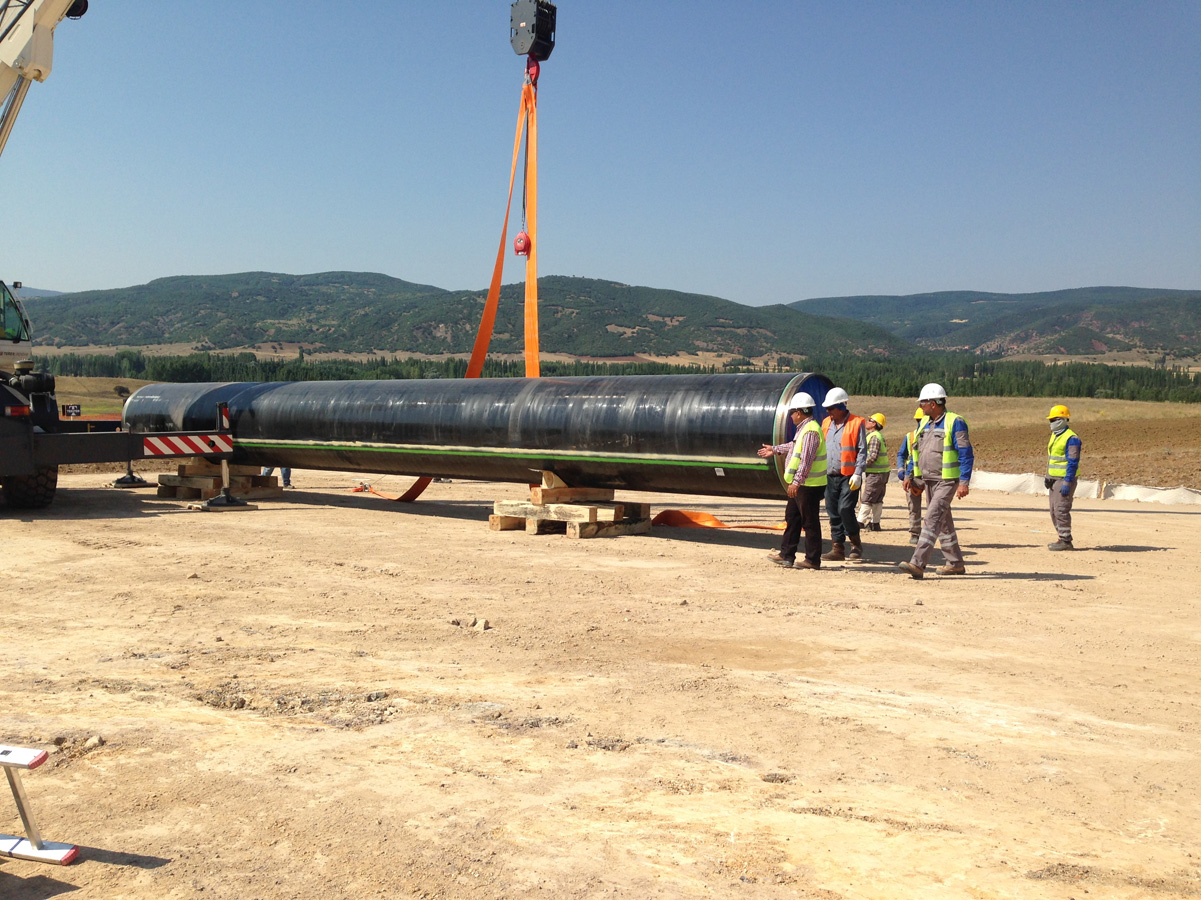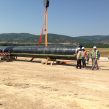
Southern Gas Corridor’s Advances Cool off Energy Cooperation Between Italy and Russia
Publication: Eurasia Daily Monitor Volume: 12 Issue: 145
By:

The European Union–backed Southern Gas Corridor (SGC) project continues to gain traction against the Moscow-led Turkish Stream natural gas pipeline initiative. The game-changer in the Euro-Russian “battle” for pipelines and energy hubs could be the participation of the major oil and gas producers Iran and Turkmenistan in the planned European energy infrastructure scheme (Trend.az, July 26). In this fast-changing scenario, Italy may be prompted to expand its engagement in the SGC and sacrifice part of its long-standing business cooperation with Russia.
The SGC is a system of pipelines projected to connect gas fields in Azerbaijan to Southern Italy via Georgia, Turkey, Greece and Albania. It is designed to reduce Europe’s dependence on Russian gas and will consist of three sections: the South Caucasus Pipeline (SCP), the Trans-Anatolia Natural Gas Pipeline (TANAP) and the Trans-Adriatic Pipeline (TAP). The SCP is already online and pipes Azerbaijani gas from the Shah Deniz field on the Caspian Sea coast to the Georgian-Turkish border; TAP will bring gas directly into Italy, but its realization is yet to start; TANAP, the longest of the three pipelines, is presently under construction and will link the SCP with TAP. The TANAP line of the SGC project is expected to be concluded by 2019, while TAP should come online in 2020.
Apart from Italy’s backing of economic and financial sanctions imposed by the EU and the United States on Russia over its annexation of Crimea and military intervention in eastern Ukraine, the first real symptom of a fracture between Rome and Moscow over energy cooperation emerged in early July 2015. At that point, the Russian state-run natural gas monopoly Gazprom terminated a contract with the Italian oil and gas services group Saipem for the construction of the first line of Turkish Stream (see EDM, July 10). This pipeline is to run from Russia’s Black Sea coast, through Turkey, up to the Turkish-Greek border, entirely bypassing Ukraine. Turkish Stream was launched in December 2014 to replace South Stream, a Gazprom-backed offshore pipeline initiative to pump gas from Russia to the Balkans across the Black Sea.
But while Saipem lost its contract to build part of Turkish Stream, the Italian-based engineering company Nuovo Pignone—a leading asset in the oil and gas division of the US corporation General Electric—won a $76.7 million tender to build the first two natural gas compressor stations for TANAP (Agenzia Nova, July 9). Saipem itself is also now turning its attention to the SGC. In fact, it will participate in the tender for the construction of TANAP’s offshore segment along with Micoperi, another Italian oil and gas contractor (Vestnik Kavkaza, June 23). Furthermore, the Italian gas infrastructure group Snam is keen to take a 20 percent stake in the TAP project (Trend.az, July 24).
The recent conclusion of the multilateral agreement aiming to rein in Iran’s nuclear activities has introduced a new variable in the energy game between Europe and Russia. Once the damaging penalties imposed on the Iranian government by the international community are actually lifted, Italy’s dynamic energy contractors will be able to play an important role in helping Tehran modernize its oil and gas infrastructure, accelerating its “re-entry” into the global market as a top exporter of raw materials. Against this background, the Italian state-owned energy producer ENI could be one of the most prominent investors in Iran, provided the Iranian energy market will become more accessible to foreign investments.
Iran plans to send gas from its South Pars gas field, in the Persian Gulf, to Europe through Turkey. This Iranian gas pipeline project, dubbed IGAT-9 or Europe Gas Export Line, needs time and investments to become fully operational. It could be connected to TANAP—at this juncture, the only trans-Anatolian gas transit initiative in the works. Teheran might indeed join TANAP and buy equities in it, Iran’s ambassador to Azerbaijan, Mohsen Pak Ayeen, announced on May 5 (APA, May 5).
Turkmenistan is yet another gas player weighing the possibility of participating in the SGC venture. The SGC represents a great opportunity for the Central Asian republic, as it is trying to diversify its export energy portfolio, which is now dominated by China. However, the potential development of a link between Turkmenistan’s offshore gas blocks in the Caspian Sea and the SGC is hampered by delays in the construction of the Trans-Caspian Pipeline (TCP), a planned offshore pipeline to bring natural gas from Turkmenistan to Azerbaijan (see EDM, July 22).
Italy could only benefit from Turkmenistan’s involvement in the SGC. It is worth noting that ENI is engaged in upstream operations in the onshore Nebit Dag block, in western Turkmenistan. The Italian energy company is also expected to increase its investments in the Turkmenistani offshore gas fields in the Caspian Sea.
Depending on whether or not Turkish Stream will be revived, it appears that the implementation of the SGC would be more profitable for Italy. First, Rome can go ahead with the effort to diversify its energy suppliers. In 2014, Azerbaijan was Italy’s largest oil supplier, while Russia ranked second. In the first five months of 2015, Azerbaijan accounted for 19.5 percent of Italy’s imports of crude, while Russia’s share was 17.5 percent, according to the Italian Oil Union (Unionepetrolifera.it, July 10). Russia remains Italy’s biggest supplier of natural gas, but its exports decreased by 13 percent in 2014, Italy’s Ministry of Development reports (Luce-gas.it, July 28). Such a downward trajectory is influenced by the sanctions regime leveled at Russia over the Ukrainian crisis, but it is also in line with the proposed European common energy policy, which pushes for the diversification of energy sources and providers (Europa.eu, February 2015).
The SGC will allow Italy to become a transit country for northern Europe. A portion of the Azerbaijani natural gas piped to southern Italy from the Caucasus could indeed be redirected to northern Europe via the system of conduits passing through the Italian peninsula—and the same goes for potential volumes eventually sent to Europe from Iran and Turkmenistan (see EDM, July 18, 2013).
Finally, looking at the big picture, the development of the SGC paves the way for the participation of Italian companies in a prospective energy infrastructure framework spanning a sizeable portion of Eurasia. The connection with Iran and Turkmenistan could multiply the SGC’s strategic importance, linking the Mediterranean basin to the Caspian Sea region and southward to the Persian Gulf. And when a system of business relations grows in an interconnected geographic context, as it is envisaged by supporters of the SGC, it turns inevitably into a system of geopolitical ties. Such an outcome would be quite attractive for small-to-medium sized and export-oriented powers, including Italy.




